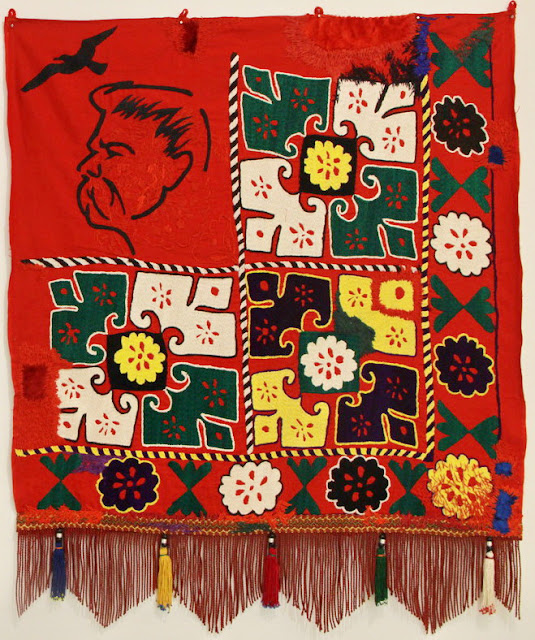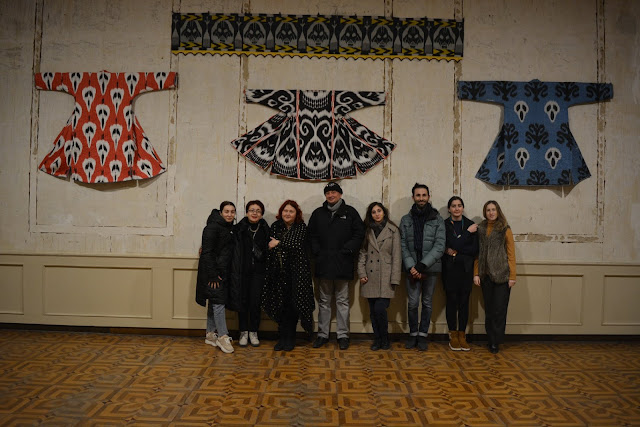 |
| Red deer and Gorbachev. Worked folk art suzani by Dilyara Kaipova |
The Tashkent exhibition "North Lights of the South" was held at Zero Line Gallery, Tashkent's premier exhibition space.
Kaipova explored the colonization of Uzbekistan - often referred to as "the south" during the Russian and Soviet periods - and the specific character of these periods.
From the 1960s through the 1990s, traditional naive embroidery forms were embellished with heroes of films, illustrations from Soviet magazines or postcards, quotes or verses of their own essays.
In reference to the Gorbachev piece above, Kaipova stitched Gorbachev into the embroidery as a marker of the time and place of the famous "jump into the void." What are the shifts that have occurred in traditional cultures since then?
As well as embroideries, Kaipova created chapans (Uzbek traditional coat) reflecting this theme.
 |
| Chapan "Pushkin" of cotton quilted fabric |
 |
| Embroidery on fabric "Gorky" - Maxim Gorky was the most published author of the USSR |
All textiles that are produced as exhibition objects are ikats, handwoven according to Kaipova’s sketches by the masters from Margilan in the Fergana Valley.
The exhibition builds on her earlier work about national self-identification, the intervention of "alien bodies" into national culture and the urgent globalization processes of the modern world. The exhibition also includes Kaipova’s photos and a slide show of art objects in the interiors or exteriors of traditional Uzbek houses.
 |
| Chapan with Pushkin, Soviet star and almond. Kaipova's Tbilisi exhibition |
 |
| Chapan - Homage to Gagarin. Kaipova's Tbilisi exhibition |
 |
| Wall hanging Alien. Kaipova's Tbilisi exhibition |
 |
| Dilyara Kaipova, 3rd from left, with museum staff at the exhibition opening, Tbilisi. |
Related posts:
The Fantasy World of Uzbek Textile Artist Dilyara Kaipova
Dilyara Kaipova Strikes Again at the International Applied Arts Festival, Tashkent
Dilyara Kaipova Conquers Bishkek at the Asanbay Center
Buy Original Ikat Items by Dilyara Kaipova - Uzbekistan's Foremost, Modern Textile Designer
Dilyara Kaipova Takes on New York
